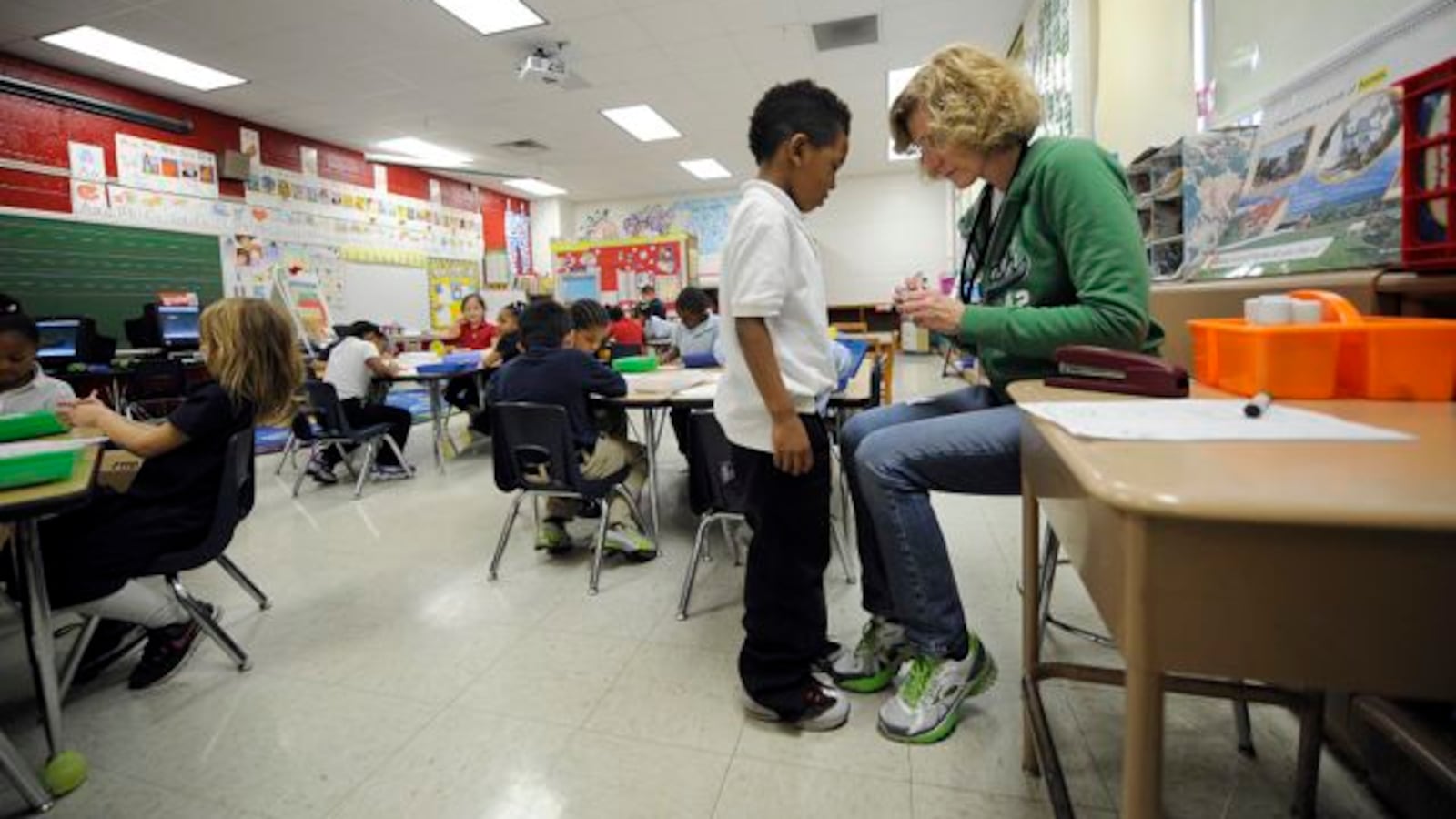(This is one of six stories on the release of teacher evaluation data. For links to all the stories go here.)
Does it seem plausible that one school in Lawrence Township, a B-rated school in fact, has more ineffective teachers than all of Indianapolis Public Schools, where more than half the schools were rated D and F last year?
Because that’s what data released today by the state shows.
Lawrence’s Crestview Elementary School had five ineffective educators out of 40, third highest number in the state. Only 12 schools across all of Indiana had more than two ineffective educators.
By comparison, Indianapolis Public Schools deemed just five educators ineffective out of 2,672 it rated. That equates to just under 0.2 percent, even less than the tiny state average.
It’s examples like this — Crestview seems awfully tough, and IPS perhaps a little too generous — that has educators asking questions about Indiana’s new law requiring tougher evaluations and each district’s sometimes very different interpretation of it.
Count IPS Superintendent Lewis Ferebee among those who believe the system is flawed. He is already in talks with his local union about how to change the way IPS approaches evaluation.
There must be more ineffective teaching going on at D and F schools than the teacher ratings suggest, Ferebee said.
“There is a misalignment with how we are evaluating our teachers if you look at the student outcomes,” he said. “We have among the most schools struggling and yet most of our teachers are being rated effective or highly effective.”
School officials already have begun to look what is being done wrong in IPS, Ferebee said, and they’re finding examples of practices that need to change.
“In some cases the expectations are too low,” he said. “In our instrument, three-fourths of a classroom engaged (when a teacher is observed) is rated as effective based on our standards. In a class of 20, five unengaged students is not good. That’s just one example.”
Lawrence Township was perhaps the most interesting Indianapolis-area district: it was second-highest in Marion County with 51 percent of educators rated highly effective but also was one of just two districts statewide with more than 10 educators rated ineffective, although its 14 ineffective educators constituted just 1.4 percent of those it rated.
Every other Marion County district had fewer than 1 percent of educators rated ineffective and four — Speedway along with Wayne, Franklin and Decatur townships — reported no ineffective educators.
Compared to wealthier, high-rated suburban districts, some Marion County districts seemed to be easier graders.
Suburban Carmel, (32 percent rated highly effective), Brownsburg (34 percent), Avon (36 percent) and Zionsville (38 percent) were all around the state average. So were Marion County’s Washington (32 percent), Warren (31 percent) and Franklin (30 percent) townships. But along with Lawrence, considerably more educators were rated highly effective in Speedway (56 percent) and Wayne Township (46 percent).
It was tougher to get a top grade from Beech Grove (22 percent) IPS (13 percent) and Pike (17 percent), Dectaur (9 percent) and Perry (8 percent) townships.
Ferebee said talks with the union about revamping IPS’s rating system, have been encouraging so far.
“I think there is a willingness to work together to recognize our highest-performing teachers and align some kind of pay for performance structure to our pay system,” he said.
If the system were better able to distinguish the very best teachers, it could help the district identify top teachers for leadership roles or to help create curriculum. He’s pushing for a system that includes more observation by principals.
“We have some highly effective teachers we may have missed,” Ferebee said. “A concern with our system is it’s based on a model where there is one extended observation and one shorter observation. I’d like to see us get into classrooms? more and spend more time on observation.”

